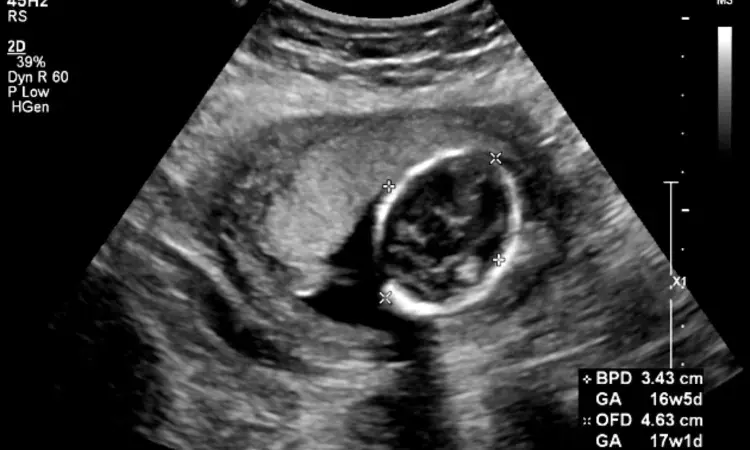- Home
- Medical news & Guidelines
- Anesthesiology
- Cardiology and CTVS
- Critical Care
- Dentistry
- Dermatology
- Diabetes and Endocrinology
- ENT
- Gastroenterology
- Medicine
- Nephrology
- Neurology
- Obstretics-Gynaecology
- Oncology
- Ophthalmology
- Orthopaedics
- Pediatrics-Neonatology
- Psychiatry
- Pulmonology
- Radiology
- Surgery
- Urology
- Laboratory Medicine
- Diet
- Nursing
- Paramedical
- Physiotherapy
- Health news
- Fact Check
- Bone Health Fact Check
- Brain Health Fact Check
- Cancer Related Fact Check
- Child Care Fact Check
- Dental and oral health fact check
- Diabetes and metabolic health fact check
- Diet and Nutrition Fact Check
- Eye and ENT Care Fact Check
- Fitness fact check
- Gut health fact check
- Heart health fact check
- Kidney health fact check
- Medical education fact check
- Men's health fact check
- Respiratory fact check
- Skin and hair care fact check
- Vaccine and Immunization fact check
- Women's health fact check
- AYUSH
- State News
- Andaman and Nicobar Islands
- Andhra Pradesh
- Arunachal Pradesh
- Assam
- Bihar
- Chandigarh
- Chattisgarh
- Dadra and Nagar Haveli
- Daman and Diu
- Delhi
- Goa
- Gujarat
- Haryana
- Himachal Pradesh
- Jammu & Kashmir
- Jharkhand
- Karnataka
- Kerala
- Ladakh
- Lakshadweep
- Madhya Pradesh
- Maharashtra
- Manipur
- Meghalaya
- Mizoram
- Nagaland
- Odisha
- Puducherry
- Punjab
- Rajasthan
- Sikkim
- Tamil Nadu
- Telangana
- Tripura
- Uttar Pradesh
- Uttrakhand
- West Bengal
- Medical Education
- Industry
Higher nuchal translucency in ultrasound tied to increased chromosomal anomalies risk: JAMA

A recent study from Ontario, Canada, unveiled a strong link between the measurements of fetal nuchal translucency and the risk of chromosomal anomalies, including conditions less frequently screened for in current prenatal practices. The findings were published in the recent edition of Journal of American Medical Association.
The study involved a massive group of over 414,000 singleton pregnancies, that illuminated the significance of nuchal translucency measurements as an early indicator of genetic conditions by prompting a reevaluation of existing cutoff points for follow-up testing. Nuchal translucency (NT) measurement with ultrasonography is a common in prenatal screening that primarily targets trisomies 21 (Down syndrome) and 18. Traditionally, a cutoff of 3.5 mm or more was utilized to flag pregnancies for further investigation, like the cell-free DNA (cfDNA) screening or more detailed cytogenetic analysis. However, the findings of this study suggest that risks related with chromosomal anomalies may be significantly elevated even at NT measurements below the conventional 3.5 mm threshold.
This study utilized data from the Better Outcomes Registry & Network, Ontario's perinatal registry and spanned singleton pregnancies with estimated delivery dates from September 1, 2016 to March 31, 2021. The analysis revealed a risk, where increased NT measurements even that were less than 3.5 mm were linked with a increased likelihood of chromosomal anomalies beyond the most commonly screened conditions, such as trisomies 13, 18, 21 and sex chromosome abnormalities.
The study showed an adjusted risk ratio (ARR) of chromosomal anomalies at an alarming 20.33, with an adjusted risk difference (ARD) of 9.94% for the pregnancies with NT measurements between 3.0 and less than 3.5 mm. Also, when the analysis was restricted to less common chromosomal anomalies, the ARR was at 4.97 and the ARD was at 1.40% that underscored a significant increase in risk even for anomalies not routinely included in prenatal screening programs.
These findings were analyzed between March and August 2023 that challenged the adequacy of the current 3.5 mm NT cutoff and also illuminate the need for a precise approach to prenatal screening. The pregnancies with NT measurements less than 2.0 mm showed the lowest risk that indicated lower NT measurements could serve as a reassuring indicator for expecting parents and healthcare providers.
Reference:
Bellai-Dussault, K., Dougan, S. D., Fell, D. B., Little, J., Meng, L., Okun, N., Walker, M. C., Armour, C. M., & Potter, B. K. (2024). Ultrasonographic Fetal Nuchal Translucency Measurements and Cytogenetic Outcomes. In JAMA Network Open (Vol. 7, Issue 3, p. e243689). American Medical Association (AMA). https://doi.org/10.1001/jamanetworkopen.2024.3689
Neuroscience Masters graduate
Jacinthlyn Sylvia, a Neuroscience Master's graduate from Chennai has worked extensively in deciphering the neurobiology of cognition and motor control in aging. She also has spread-out exposure to Neurosurgery from her Bachelor’s. She is currently involved in active Neuro-Oncology research. She is an upcoming neuroscientist with a fiery passion for writing. Her news cover at Medical Dialogues feature recent discoveries and updates from the healthcare and biomedical research fields. She can be reached at editorial@medicaldialogues.in
Dr Kamal Kant Kohli-MBBS, DTCD- a chest specialist with more than 30 years of practice and a flair for writing clinical articles, Dr Kamal Kant Kohli joined Medical Dialogues as a Chief Editor of Medical News. Besides writing articles, as an editor, he proofreads and verifies all the medical content published on Medical Dialogues including those coming from journals, studies,medical conferences,guidelines etc. Email: drkohli@medicaldialogues.in. Contact no. 011-43720751


